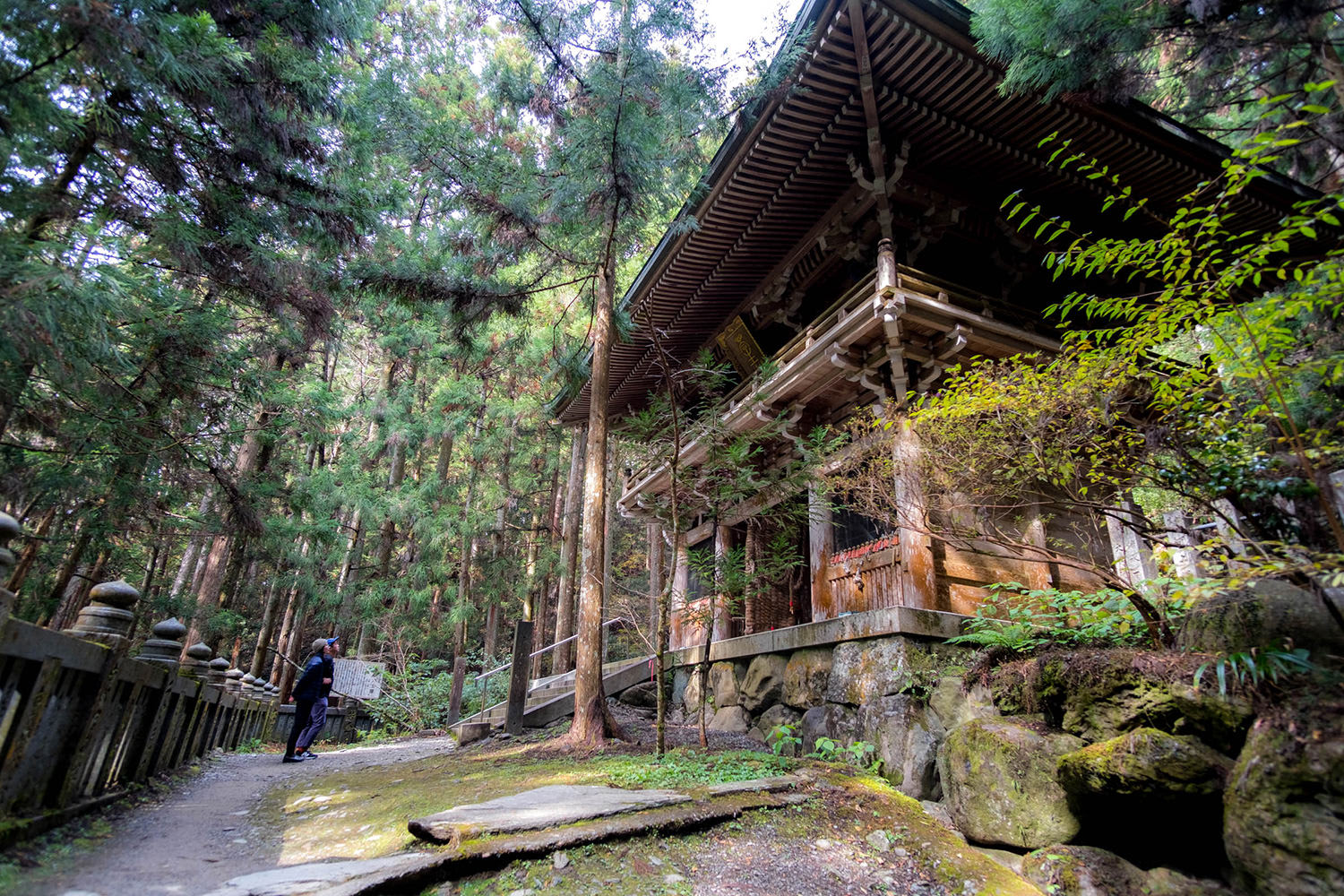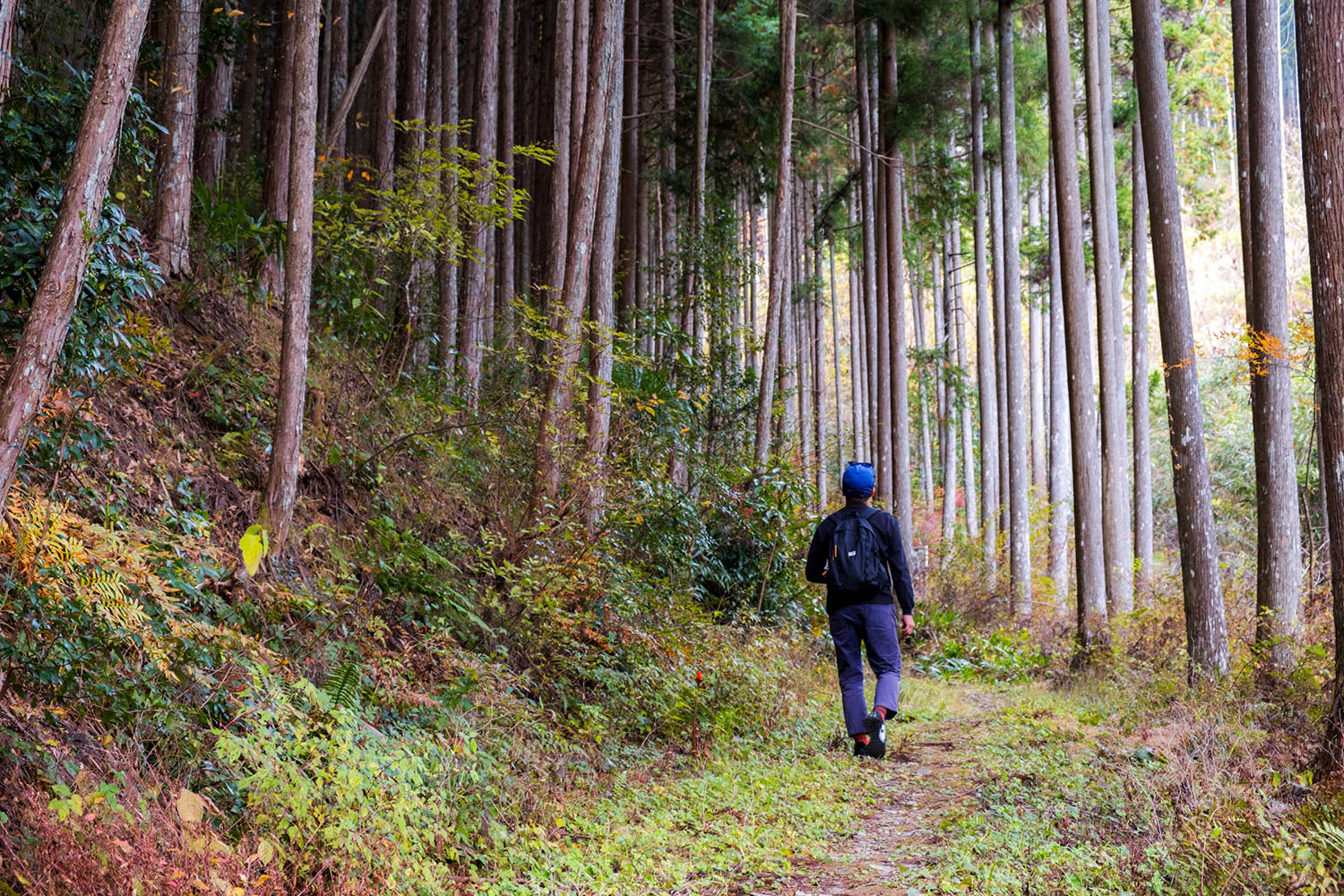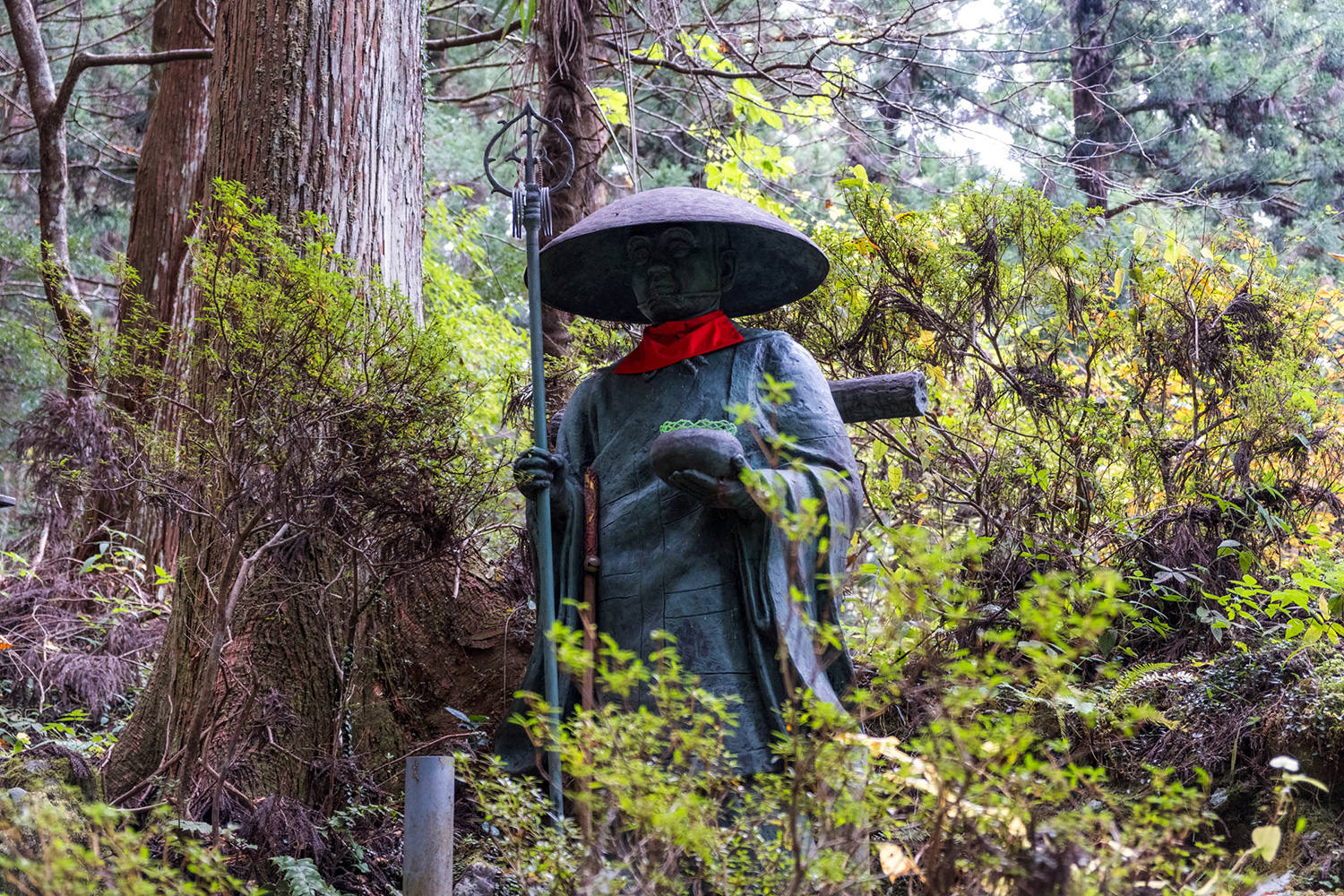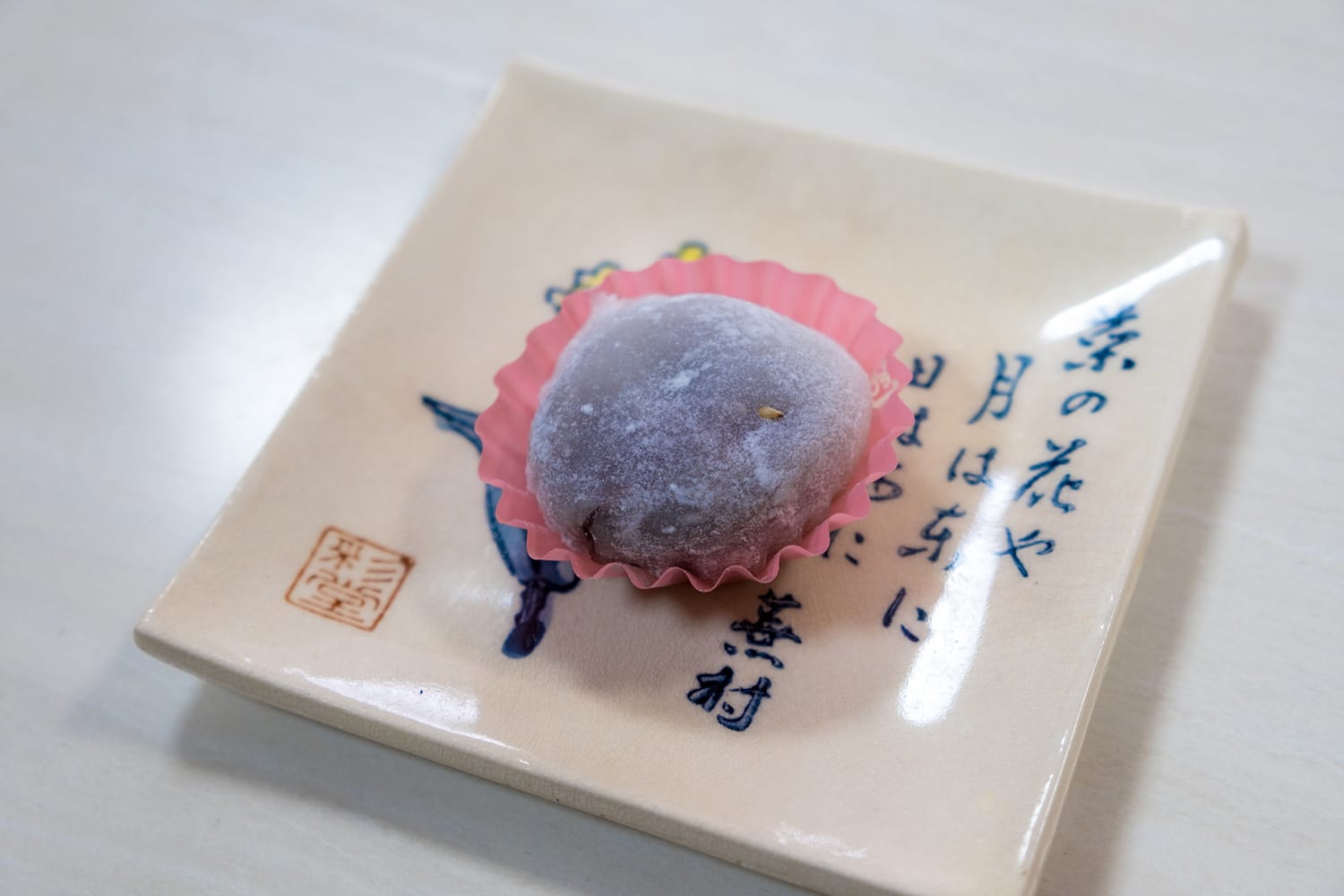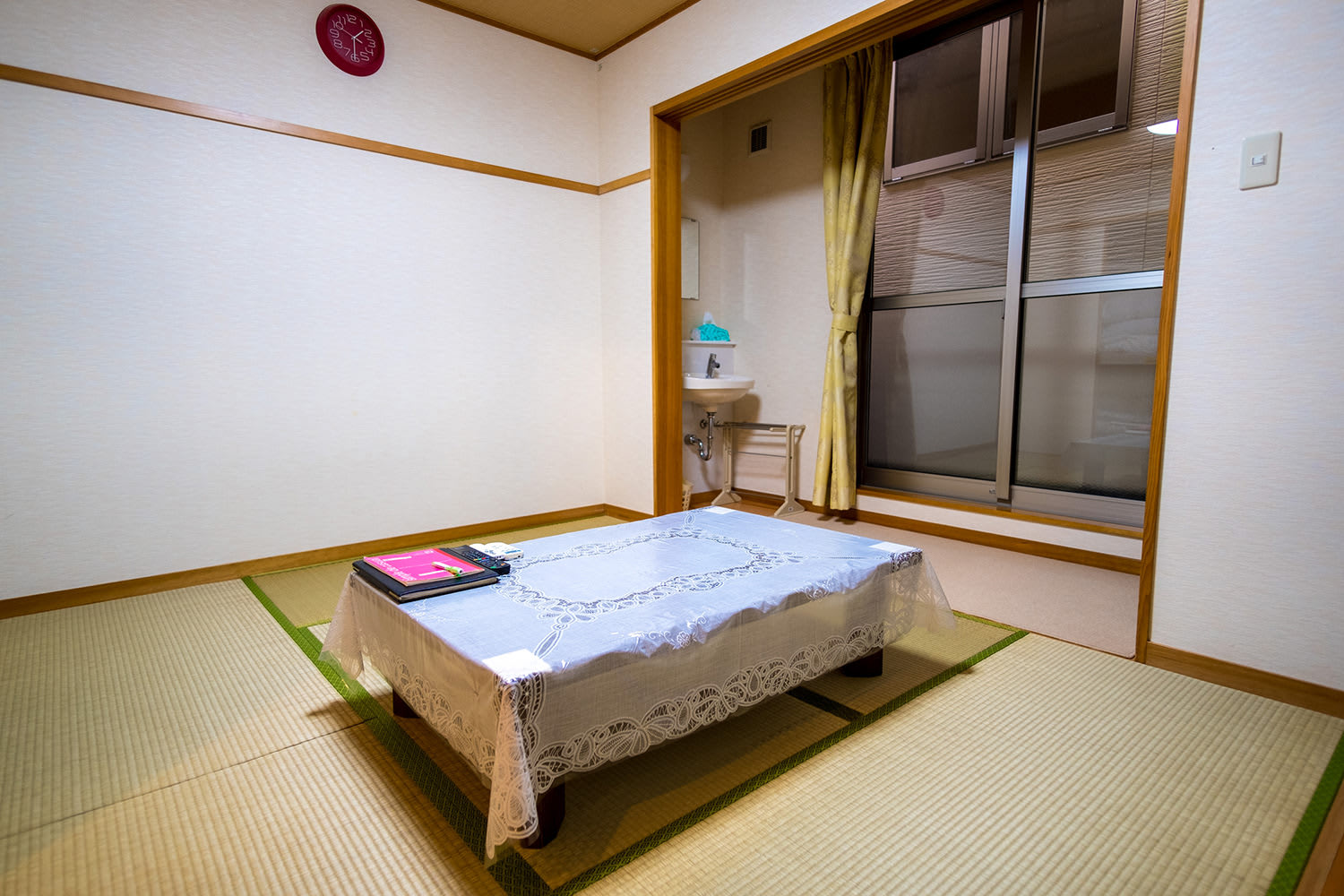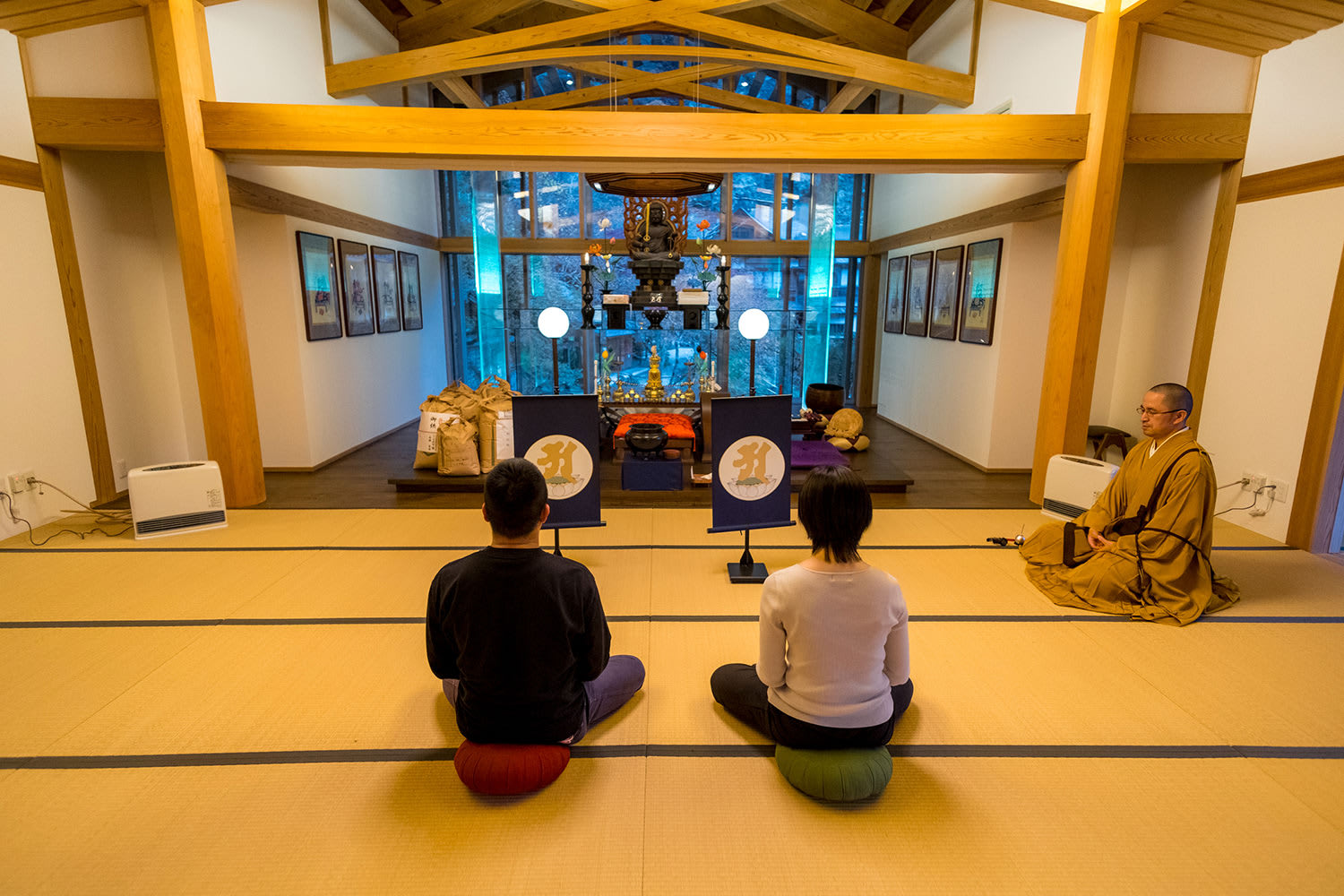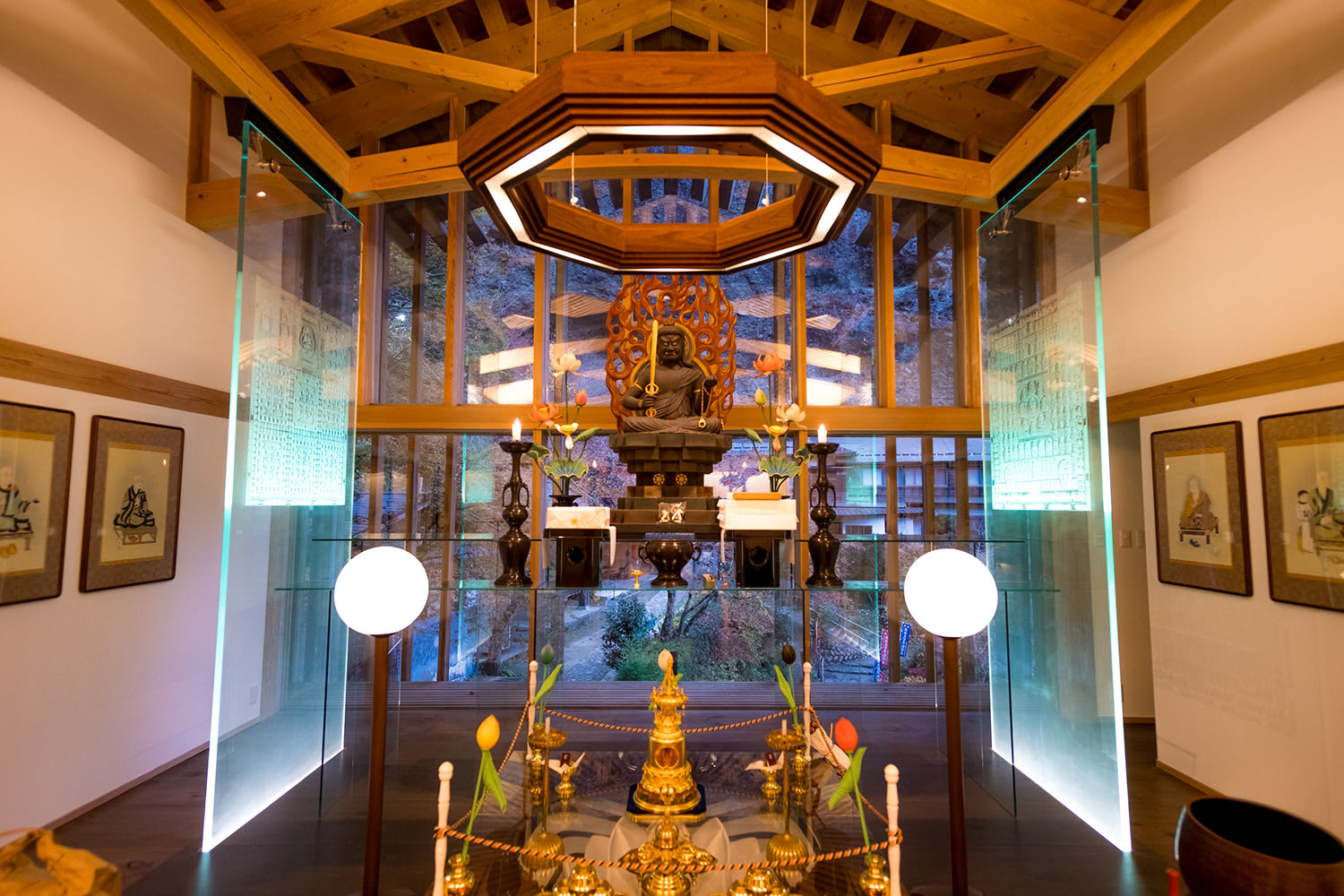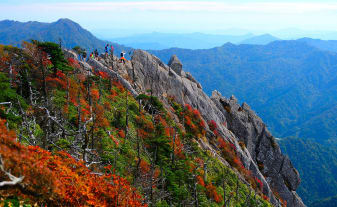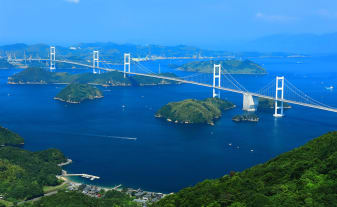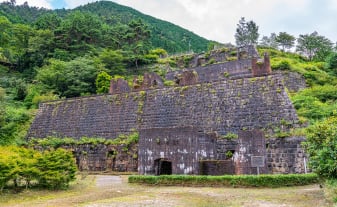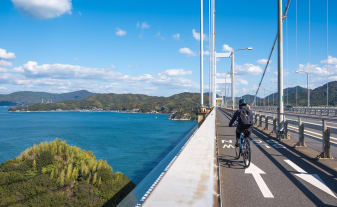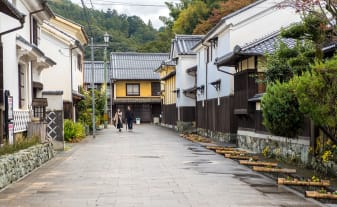 STORIES & GUIDES
STORIES & GUIDES
Japan Travel Inspiration 05: Experience a Walk Through Serene Landscapes & Warmth of this Ancient Pilgrimage Route

Dappled sunlight glimmered through the ancient cedars, showering golden rays onto hundreds of stone guardians smiling down upon me. As I walked towards Iwayaji Temple, one of the 88 temples on the ancient Shikoku pilgrimage route, I neared the end of my brief but rich spiritual journey.
The 88 Pilgrimage Temples in Shikoku, also known as the Ohenro, span a route approximately 1,200 kilometers long, requiring weeks of walking, hiking, and climbing for the most dedicated on a mission to complete the entire journey. On the contrary, my trip was a more modest rendition of the pilgrimage, starting from Ehime’s Daihoji Temple, the 44th temple on the Shikoku Pilgrimage, and concluding at Iwayaji Temple, the 45th. Though this is just a fraction of the entire route, even short trips will offer a glimpse into the profound spiritual experiences that many travelers seek on these trails.
From scaling jaw-dropping cliff shrines and having a private zazen meditation session with a monk to visiting the locals running the pilgrimage houses. Even though my journey was brief, I got to explore the stunning mountains and forests, soak in the rich natural beauty, and feel the genuine sincerity of the wonderful people there.
-
Embarking on my First 88 Sacred Temple Pilgrimage
The first time I ever visited one of the 88 temples was over a year ago, situated along one of the dramatic peninsulas of Shikoku. While this temple was filled with the scent of flowers and the sea, another temple visit was filled with the calming sounds of bells. During this trip, I encountered a pilgrim in his iconic white robe and Sugahasa hat, walking along a path enveloped by green autumn leaves. As we passed each other and exchanged greetings, I was struck by the realization of a Japanese tradition that has endured unchanged since time immemorial.
Pilgrims of the past and present have visited Shikoku’s many temples for over 1,200 years to embark on this challenging yet refreshing journey. Believed to have been established by the Buddhist monk Kukai, also known as Kobo Daishi, the founder of the Shingon Sect of Buddhism, many see this pilgrimage as a symbolic act of following in the footsteps of those who trained at some of these temples in pursuit of enlightenment. -
Today, many people who embark on this journey do so for various reasons; seeking spiritual enlightenment, praying for good health, honoring their ancestors, or simply enjoying fresh air and exercise. For me, it's a bit of both—an opportunity to stretch my legs, appreciate the beauty of each temple and its natural surroundings, and open myself to quiet moments of reflection as I make my way to my first temple of this trip, at Daihoji Temple.
-
Daihoji Temple: The First Stop on My Pilgrimage and Unveiling the Beauty and Significance of this Sacred Temple
After meeting my companions for this trip, we left Matsuyama City by rental car and arrived at the Daihoji Temple parking lot. We then proceeded towards the Daihoji Temple. The approach to Daihoji Temple begins with a long pathway, enveloped in the tranquility of dense cedar and cypress trees. Here, we are the only ones present, the only ones taking in the quiet mountain air enveloping the mystery of this temple. I can see immediately how one could lose oneself in this atmosphere and delve deeply into spiritual reflection.
-
The pathway looped through ferns and moss-covered ground, leading up to the main gate. Before passing through, I put my hands together, bowed once, following the proper etiquette learned from my companions, and then proceeded toward the main hall. In mid-autumn, the ginkgo trees had already started shedding their golden leaves, turning the temple floor into a beautiful blend of yellow and gold.
-
At the top of the stairs is the serene Main Hall. Standing next to it is the eleven-faced Kannon statue, the main deity to whom the temple is dedicated. Despite her stately crown, this is only a copy of the true treasure believed to be stored inside — a Kannon made of copper and gold, adorned with around 130 stones, each inscribed with the Lotus Sutra. Said to possess the power to heal illnesses, her story here at Daihoji Temple is intrinsically tied to the temple’s history.
-
Legend has it that during the mid-12th century, the Japanese emperor fell suddenly ill with a mysterious brain disease. To aid his recovery, a representative was sent to pray at Daihoji Temple on his behalf. Miraculously, the prayers were answered. Perhaps, I thought, Kannon played a role in his recovery.
The symbolic act of purification begins here, demonstrated by my comrades, who washed their hands and rinsed their mouths at the wash basin before offering incense and candles at the main hall. Those wishing to stay overnight at Daihoji can make an advance reservation and get a taste of the simple Buddhist lifestyle, from sutra copying and meditation to listening to the priests give talks.
But we are on a mission to continue on our journey. Next, after paying our respects to Kannon and leaving our car at the Daihoji Temple parking lot, we started on an eight-kilometer, four-hour pilgrimage on foot along a beautiful mountain forest path toward Iwayaji Temple. -
Experiencing Heartwarming Local Hospitality with Osettai and Pilgrim Lodges
As we trekked along this popular yet quiet hiking route, the pathway felt alive, with a beautiful canopy of deciduous leaves slowly turning to gold. One thing you can look forward to if you are wearing the classic white tunic of the pilgrim are the surprising acts of generosity bestowed by the local residents along the pilgrimage.
-
This tradition of giving help and offering small gifts like drinks, snacks, and fruit to those on the pilgrimage is called osettai, and even in this modern time, the tradition remains strong. Locals who spot the white vest even pass out hot coffees or local oranges from their car windows, as I have once seen during my travels through Shikoku. Each act of kindness is meant as a gesture of encouragement to motivate you on your journey.
-
Wearing my regular hiking clothes, I don’t appear an obvious candidate since locals can't quickly identify me as a pilgrim. However, there is another place where I can experience the osettai spirit.
-
During our hike, we made a brief stop at Haccho-zaka, one of the pilgrim lodges along this pilgrimage route, a charming and cozy accommodation that leaves you with a deep sense of connection to the local community. Unlike regular hotels, this budget-friendly lodging option, like other pilgrim lodges, really invites you into a homely atmosphere where travelers can experience the genuine hospitality of the locals, like conversing with your host after dinner, savoring homemade meals made with garden-fresh vegetables sourced from the inn's fields, and more.
-
We called out at the entrance, and the manager, Aiko Ohno, greeted us. Despite her busy preparations for guests, she took some time to sit with us in the dining area and offered us tea and a fresh blueberry mochi dessert made with blueberries from her garden.
-
As an experienced pilgrim to 88 pilgrimage sites herself, she opened Haccho-zaka 12 years ago and has been steadily adding rooms to accommodate the growing number of people coming to stay here. She even offers barrier-free rooms and caters to specific diets, such as vegetarians or those who do not eat fish.
After a long day of walking, the cozy and clean rooms and Ohno-san’s friendly local hospitality would be like a warm hug to any tired souls staying here. Embodying the osettai spirit of the pilgrimage, staying at this lodge would be a lovely reminder that you aren’t alone and will find moments of encouragement throughout this journey. -
Iwayaji Temple: An Immersion into Tranquility and Serenity
After walking for about four hours, we found ourselves standing at the top of Iwayaji Temple, nestled between two rocky precipices atop a 700-meter mountain. As we descended the mountain path, we stumbled upon a locked wooden door. Without any hesitation, one of my companions assured me that we would explore the place later. As we continued, we discovered Thirty-six Juvenile Stone Buddhist statues, each with a unique and captivating face, arranged in perfect symmetry. We made a note to revisit them soon. As we moved forward, we passed through the Niomon gate, feeling confident and eager to explore the temple grounds.
-
A lot more attractions await at Iwayaji Temple. One of the main features of the temple is the Iwayaji Main Temple Hall, which is seamlessly integrated into a huge rock cliff. Feeling adventurous, I climbed the ladder adjacent to the hall up to a shallow cave, its contents hidden from those standing at its base. After climbing the steep rock face, I stood on the top of the cliff once used for ascetic practices, where I could see the entire view of the temple grounds for the first time.
-
For me, it was an opportunity to appreciate the beauty of the surroundings, with the vast rock cliffs in the distance. As I descended back down the steep ladder, thinking it would be my last climb, little did I know that even more ladder climbing would be required at Iwayaji Temple.
-
Next, we headed back to the Inner Shrine in the deepest recesses of the temple, and the temple's highest and most challenging climb. Before proceeding, we collected a key from the temple office to access a gated mountain passage and a pack of osamefuda bills. With the bills in hand, we began our hike back. Along the way, we placed one of the colored osamefuda bill at the feet of each of the Thirty-six Juvenile Stone Buddhist statues. As a mindfulness practice, we silently paid our respects to the deities before continuing towards the gate of the inner shrine.
-
Though this gate may not be grand, it is mysterious nonetheless. The small padlocked door, pressed against a rock face, was, in fact, a gateway into a narrow crack between towering rocks. This narrow path appeared to be carved by a giant hand, splitting a massive rock into two exact halves like a knife cutting through a stick of butter. This would be our most challenging climb, assisted by chains anchored to the rock, as we grasped along their length to make our ascent up the mountain precipice.
-
The quaint inner shrine, perched on the rock peak, stood quietly among the trees. Although my goal was to leave money at the last statue, the breathtaking panoramic view of the surrounding mountains from the summit and the distant views of Ehime’s sacred Ishizuchi Mountain Range was a welcome moment of refreshment. After our hike, we returned to the main temple complex to the Henjo-kaku, where visitors come to try zazen Buddhist meditation or sutra copying. Here, we met the head priest, dressed in his signature golden robe, as he led us through our first guided meditation session inside.
-
Sitting in front of the small banners adorned with white lotus flowers, we were instructed to focus on them as a guide for our meditation. A Kanji symbol representing Kukai floats atop the lotus flowers, which symbolize purity in Buddhism.
My Japanese was not good enough to fully grasp the meaning behind the priest's words as he explained the significance of zazen meditation. But simply being there and opening myself up was enough for many unspoken messages to come through.
What is the purpose of meditation? The priest explains that it is to bring your heart back to health. To start, sit comfortably and focus on your breathing for 20 seconds — breathe in through your nose and out through your mouth — it's all about staying calm. Allow thoughts to enter your mind, as it's not about resisting your surroundings. The priest even admits that he is not an expert at this practice. -
For the next five minutes, the silence of the space was filled only with my thoughts. Like the lotus flower, my goal is to let my mind float, like a flower over its murky waters. As the priest says, it is difficult to focus, but simply sitting there was enough for relaxation to wash over my body.
-
Tips for a Successful Short Pilgrimage Experience
Embarking on a pilgrimage to the 88 temples of Shikoku is a profoundly spiritual and meaningful journey that requires respect for Japanese customs and etiquette. It's essential to keep in mind that clapping your hands is customary when visiting a shrine, but when visiting a temple, bowing is the norm. To ensure a successful and rewarding pilgrimage, it's crucial to develop a comprehensive plan that includes walking distances, preparing for temperature and weather fluctuations, and arranging accommodations throughout your journey.
Approaching the journey with respect for its history and cultural significance is a highly recommended practice. It is important to note that you do not have to be a Buddhist to visit a temple or partake in a pilgrimage, as both temples and locals are welcoming of pilgrims from all walks of life. -
Conclusion: Reflecting on My Spiritual Journey As I Complete My Short Pilgrimage
As my brief pilgrimage came to an end, we concluded our round trip journey with a taxi cab back to the Daihoji Temple parking area. The cab driver was able to understand my destination with only a few English words and gestures. During the ride, he offered me some gum while sharing some fascinating information. He mentioned that pilgrimage is becoming a popular activity for many foreign tourists, even informing me that some even embark on a two-month-long journey on foot to visit all 88 temples.
During my brief journey on the Shikoku Pilgrimage, these two temples provided me with a unique opportunity to learn about the rich pilgrimage tradition that Japan has preserved for over 1,200 years. Although we only had a glimpse of this sacred walk, I can only imagine the historical and natural riches that await me on these ancient roads that have beckoned pilgrims for centuries.
-
Walking & Hiking
-
Shrines
-
Cultural Experiences
-
Forest Bathing
-
Temples



